Old Trent Bridge
The Nineteenth Century
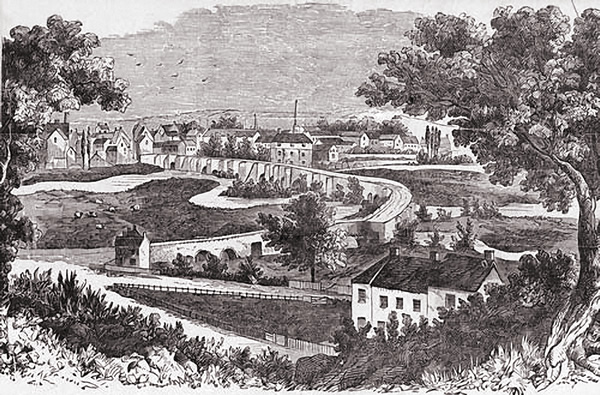
The first picture has made its way into many publications and, though a pictorial representation from 1800, it has proved to be a useful resourse in tracing the course of the old bridge, famous in its heyday for its thirty-six arches. The course of the river can also be seen to have changed quite a lot since this time.
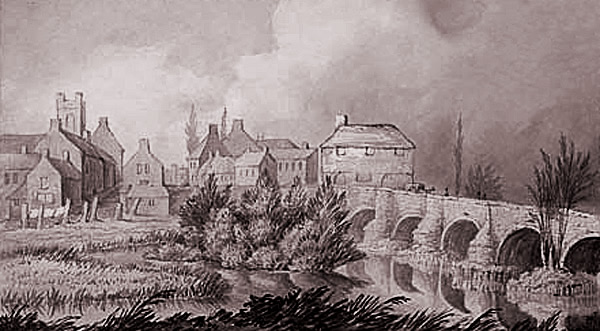
The above painting of them Old Trent Bridge was painted in 1840 and, although anonymous, provides an excellent insight. Most of what is there can be authenticated so it seems to offer a fairly accurate picture of how the bridge appeared at the time viewed from the Stapenhill end.
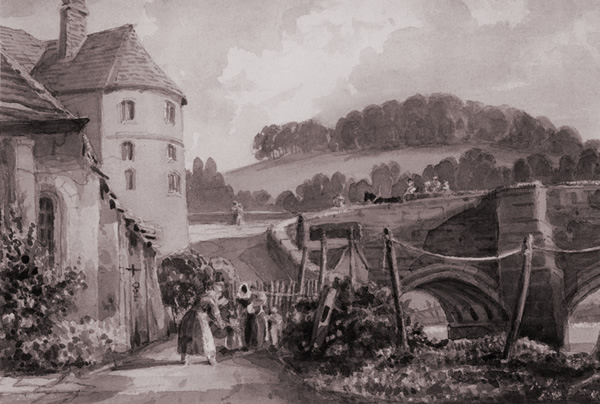
The above image shows the painting ‘Burton Bridge’ by John Harden (1772-1847). Although quite a lot of artistic license has been applied with, for example, Scalpcliffe hill being completely relocated and wooded, the fact that it is accurately dated as 1844 makes it a nice inclusion here.
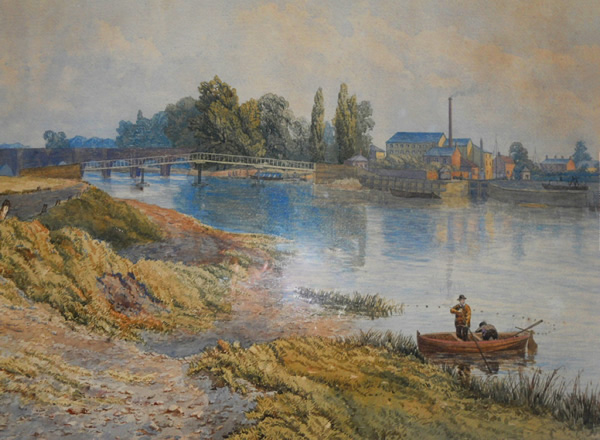
The above 1857 painting of Burton Bridge by William Wilde, though not very detailled, illuminates a couple of very interesting features. Firstly, the separate footbridge, and secondly, the lock gate with a few boats in a key on the other side.
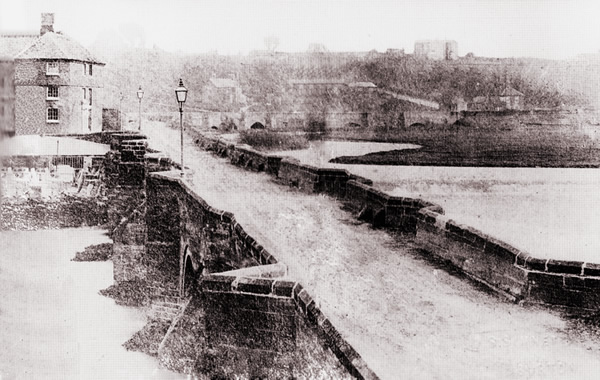
Although not of great quality, the above image shows an excellent view of the Old Trent Bridge and is one of the earliest surviving actual photographs.
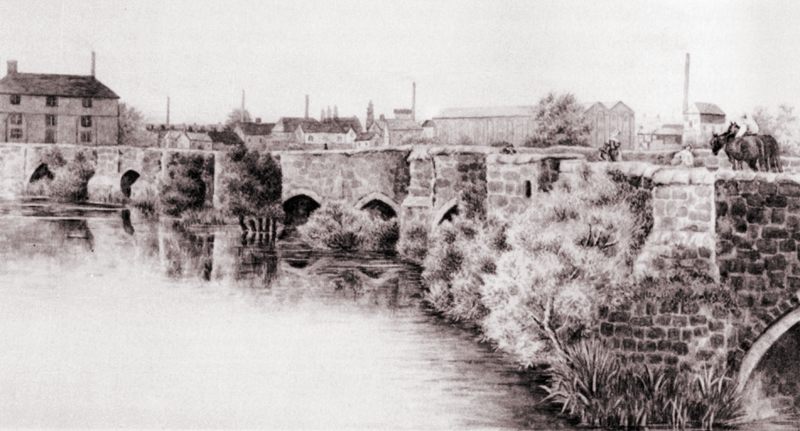
The above is one of the most illustrative paintings of the ‘old’ Burton Bridge.
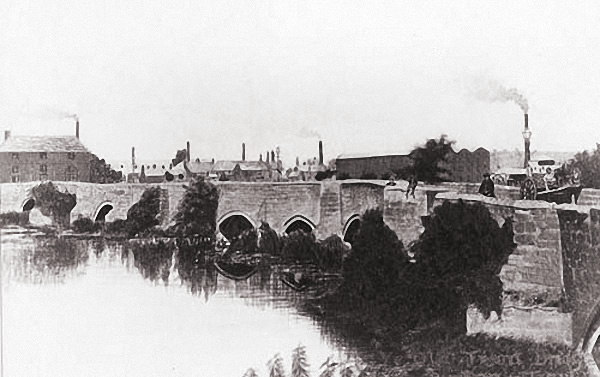
…and the orignal picture on which the painting is based, which provides one of the best surviving images of the bridge towards the end of its life.
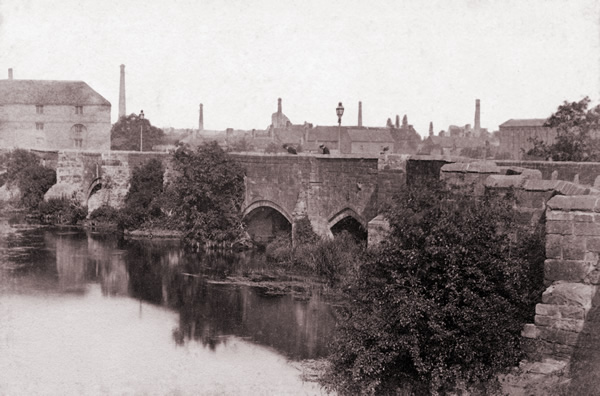
Above, a lovely picture thanks to Robin Clay that shows the bridge perfectly as it approached the end of its life.
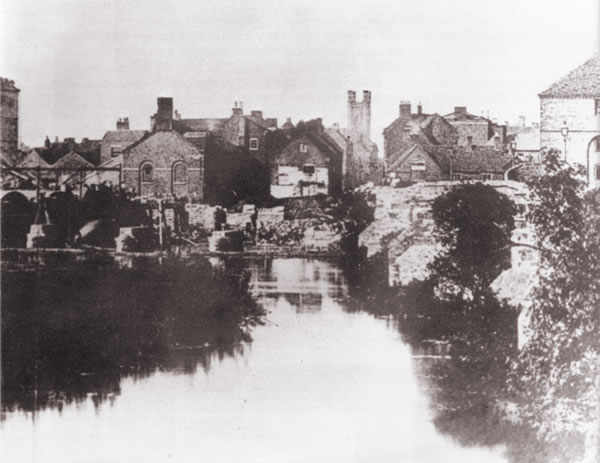
Above shows the commencement of the new replacement bridge in 1863. The foundation stone close to the initial site, which can just be made out on the left, was laid by Mr John Richardson, the High Bailiff of Burton. To the right is the old bridge still in use. In-between is Bridge Steet with building which still exist.
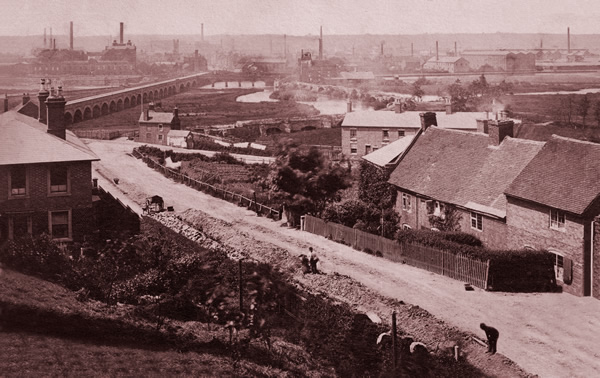
Finally, a remarkable photo capturing the brief period when both Trent Bridges co-existed. The newly finished straight bridge can be seen in its familar place, although only 40 feet wide before being later widened to twice its width. On the north side, to its right in the photo, the old bridge with its much less direct course can be clearly seen.

